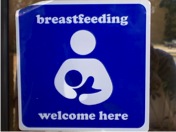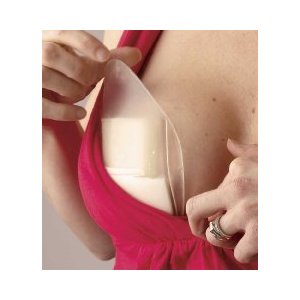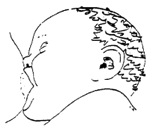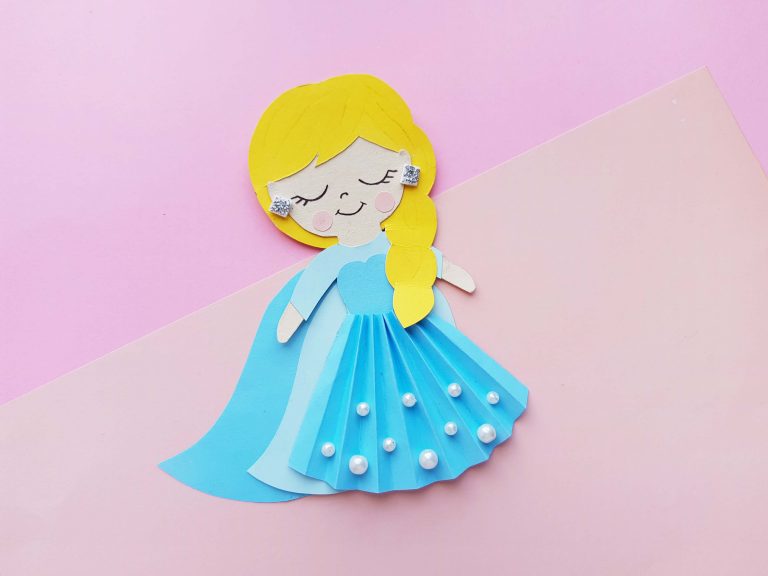Common Breastfeeding Challenges (and Solutions!)
 Breast milk is known as the “Gold Standard” in infant nutrition. It has been engineered by Mother Nature over millions of years to be the best food your growing baby can consume. It contains the perfect blend of antibodies, protein, fat and thousands of other components to optimize your baby’s rapid growth of body, brain and nervous system. In short- it’s a pretty awesome fluid!
Breast milk is known as the “Gold Standard” in infant nutrition. It has been engineered by Mother Nature over millions of years to be the best food your growing baby can consume. It contains the perfect blend of antibodies, protein, fat and thousands of other components to optimize your baby’s rapid growth of body, brain and nervous system. In short- it’s a pretty awesome fluid!
But, as any current or former breastfeeding mommy knows, it’s not always easy, especially in the first weeks. It is a new skill that you and your baby have to master together. Be ready for the challenges (or booby traps as some call them) so you can hurdle right though them to your successful breastfeeding experience!
The most common challenges in the early weeks of breastfeeding are engorgement and nipple pain. Let’s look at these common issues, why they occur and what you can do about them.
Engorgement– Uncomfortable but temporary. In the first days of life, your baby is thriving on colostrum, a nutritional powerhouse disguised in a gooey, yellow fluid. It is so full of immunity boosting proteins; colostrum is often referred to as “Baby’s First Vaccine.”

Between day two and five you may wonder if your milk will ever come in, then it does (oh brother, does it ever!). Your newborn’s stomach is about the size of a marble, but you have enough milk for an army of marble-sized stomach babies. Your breasts are very firm and you may have an uncomfortable feeling of pressure. Now get that milk moving mama! The best way to remove your milk and establish a strong supply is to nurse often. Don’t watch the clock, or try to put your baby on a schedule. Watch your baby for signs of hunger like sucking on his hand (or toes!), crying or restlessness.
If your breasts are too firm, your little one may have trouble latching, or positioning the nipple correctly. You may want to hand express some milk to soften your breast (check out this link for a great video on how to hand express) or you may use your pump to make your breast a more manageable mouthful for your baby.
 Your milk supply will adjust to your baby’s intake within the first month. The problem of leaking milk all over anyone or anything near you may linger much longer for the average mom.
Your milk supply will adjust to your baby’s intake within the first month. The problem of leaking milk all over anyone or anything near you may linger much longer for the average mom.
To collect and store all the milk from your non-nursing side during your breastfeeding sessions consider a Milk-Saver. Visit our website to learn more and watch a demo video of the Milk-Saver in action.
Nipple Pain– Check that latch.This baby illustrates a nice, deep latch.

Notice how much of the breast is in his mouth, he is pressing on the milk ducts, not sucking on the nipple. Look how his lips are flared out against the breast. Mom is comfortable and baby is effectively getting the milk he needs to grow.
 There are a few simple steps to a proper latch:
There are a few simple steps to a proper latch:
- Baby needs to open her mouth WIDE like she is yawning. Try to brush your nipple against her lips or express a few drops of milk into her mouth to let her know it’s dinner time.
- When you get the wide open mouth, quickly pull her toward your breast, her open mouth over the nipple. Make sure you are comfortable, no hunching over.
- Support herbody with your arms or pillows. Notice this baby looks like he has wide open mouth and lots of breast tissue to compress. His body and head are also in alignment. This team has skills!

If your baby is latched correctly, breastfeeding should not be painful. If you hurt or your baby does not seem to be sucking correctly, place your finger in the corner of baby’s mouth to break the latch. Don’t let your baby nurse with a shallow latch; your nipples could easily become damaged-ouch!
If you have persistent pain while nursing or you have concerns about your baby, see a lactation consultant. Call the hospital where you delivered to find help in your area.
Caring for a newborn is a lot of work; breastfeeding makes the task a bit easier. No mixing formula, washing bottles or stumbling to the kitchen at 2 a.m. Breast milk is always ready to eat and just the right temperature for your little one.
Happy Nursing!
 Helen Anderson is the co-founder of Milkies. Founded along side her mother, Renee Callanan they created the patented product, The Milk-Saver, which enables breastfeeding mothers to collect milk from the non-nursing side during a breastfeeding or pumping session. For more information visit MyMilkies.com.
Helen Anderson is the co-founder of Milkies. Founded along side her mother, Renee Callanan they created the patented product, The Milk-Saver, which enables breastfeeding mothers to collect milk from the non-nursing side during a breastfeeding or pumping session. For more information visit MyMilkies.com.






Thank you for the information. I plan to breastfeed and admit I’m worried. I only made it 4 months with my son but that was years ago. I was young. I’ve been reading a lot of information so this time I will be prepared.